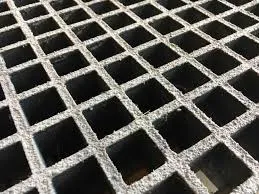
-
 Afrikaans
Afrikaans -
 Albanian
Albanian -
 Amharic
Amharic -
 Arabic
Arabic -
 Armenian
Armenian -
 Azerbaijani
Azerbaijani -
 Basque
Basque -
 Belarusian
Belarusian -
 Bengali
Bengali -
 Bosnian
Bosnian -
 Bulgarian
Bulgarian -
 Catalan
Catalan -
 Cebuano
Cebuano -
 China
China -
 China (Taiwan)
China (Taiwan) -
 Corsican
Corsican -
 Croatian
Croatian -
 Czech
Czech -
 Danish
Danish -
 Dutch
Dutch -
 English
English -
 Esperanto
Esperanto -
 Estonian
Estonian -
 Finnish
Finnish -
 French
French -
 Frisian
Frisian -
 Galician
Galician -
 Georgian
Georgian -
 German
German -
 Greek
Greek -
 Gujarati
Gujarati -
 Haitian Creole
Haitian Creole -
 hausa
hausa -
 hawaiian
hawaiian -
 Hebrew
Hebrew -
 Hindi
Hindi -
 Miao
Miao -
 Hungarian
Hungarian -
 Icelandic
Icelandic -
 igbo
igbo -
 Indonesian
Indonesian -
 irish
irish -
 Italian
Italian -
 Japanese
Japanese -
 Javanese
Javanese -
 Kannada
Kannada -
 kazakh
kazakh -
 Khmer
Khmer -
 Rwandese
Rwandese -
 Korean
Korean -
 Kurdish
Kurdish -
 Kyrgyz
Kyrgyz -
 Lao
Lao -
 Latin
Latin -
 Latvian
Latvian -
 Lithuanian
Lithuanian -
 Luxembourgish
Luxembourgish -
 Macedonian
Macedonian -
 Malgashi
Malgashi -
 Malay
Malay -
 Malayalam
Malayalam -
 Maltese
Maltese -
 Maori
Maori -
 Marathi
Marathi -
 Mongolian
Mongolian -
 Myanmar
Myanmar -
 Nepali
Nepali -
 Norwegian
Norwegian -
 Norwegian
Norwegian -
 Occitan
Occitan -
 Pashto
Pashto -
 Persian
Persian -
 Polish
Polish -
 Portuguese
Portuguese -
 Punjabi
Punjabi -
 Romanian
Romanian -
 Russian
Russian -
 Samoan
Samoan -
 Scottish Gaelic
Scottish Gaelic -
 Serbian
Serbian -
 Sesotho
Sesotho -
 Shona
Shona -
 Sindhi
Sindhi -
 Sinhala
Sinhala -
 Slovak
Slovak -
 Slovenian
Slovenian -
 Somali
Somali -
 Spanish
Spanish -
 Sundanese
Sundanese -
 Swahili
Swahili -
 Swedish
Swedish -
 Tagalog
Tagalog -
 Tajik
Tajik -
 Tamil
Tamil -
 Tatar
Tatar -
 Telugu
Telugu -
 Thai
Thai -
 Turkish
Turkish -
 Turkmen
Turkmen -
 Ukrainian
Ukrainian -
 Urdu
Urdu -
 Uighur
Uighur -
 Uzbek
Uzbek -
 Vietnamese
Vietnamese -
 Welsh
Welsh -
 Bantu
Bantu -
 Yiddish
Yiddish -
 Yoruba
Yoruba -
 Zulu
Zulu
Exploring GRP Transport Tanks for Efficient Liquid Storage Solutions
Understanding GRP Transport Tanks A Comprehensive Overview
In the modern world, the transportation of liquids and chemicals is a vital necessity, and the choice of storage solutions plays a crucial role in ensuring safety, efficiency, and compliance with regulations. One such solution that has gained significant traction in various industries is the Glass Reinforced Plastic (GRP) transport tank. This article delves into the features, advantages, applications, and considerations surrounding GRP transport tanks.
What are GRP Transport Tanks?
GRP transport tanks, also known as fiberglass tanks, are constructed using a composite of glass fibers and resin. This combination results in a robust and lightweight material that can withstand the corrosion associated with aggressive chemicals, thus making it an ideal choice for storing and transporting fluids.
Key Features
1. Corrosion Resistance One of the standout features of GRP tanks is their high resistance to chemical corrosion. Traditional materials like steel and aluminum can deteriorate over time when exposed to certain chemicals, but GRP can effectively handle a wide range of aggressive substances without compromising structural integrity.
2. Lightweight Compared to metal tanks, GRP transport tanks are significantly lighter, which can lead to reduced transportation costs and easier handling during installation and removal.
3. Durability These tanks exhibit exceptional durability and longevity, making them a cost-effective option for long-term use. They are resistant to impacts and fatigue, leading to lower maintenance requirements.
4. Thermal Insulation GRP materials provide excellent thermal insulation, helping to maintain the temperature of the contents within the tank. This is particularly beneficial for transporting temperature-sensitive materials.
5. Customization GRP transport tanks can be tailored to meet specific requirements, such as size, shape, and additional features like manholes, flanges, and specific fittings.
Advantages of GRP Transport Tanks
1. Safety The non-reactive nature of fiberglass makes GRP tanks a safer choice for transporting hazardous materials. They reduce the risk of leaks and spills, contributing to safer working environments.
2. Cost-effectiveness Although the initial investment in GRP tanks might be higher than some alternatives, the reduction in maintenance and repair costs, combined with their longevity, makes them a financially sound option over time.
3. Environmental Impact With increasing regulatory pressures to minimize environmental damage, GRP transport tanks offer a more environmentally friendly solution. Their resistance to leaks reduces the risk of contaminants entering the soil and water systems.
grp transport tank

Applications
GRP transport tanks have a broad spectrum of applications across various industries
. Some of the most common include- Chemical Industry Used for storing and transporting chemicals such as acids, alkalis, and solvents due to their resistance to corrosion.
- Food and Beverage GRP tanks can be used to store liquids like juices or oils, as they do not impart any contaminants or flavors to the stored products.
- Water Treatment They are employed for storing treated water or chemicals used in water treatment processes.
- Oil and Gas GRP tanks find applications in the storage and transport of oil, fuel, and other hydrocarbons.
Considerations
When selecting GRP transport tanks, it is essential to consider factors like
1. Regulatory Compliance Ensure that the tanks meet local and international standards for safety and environmental protection.
2. Specific Chemical Compatibility While GRP offers wide-ranging resistance, it is crucial to consult compatibility charts to ensure suitability for specific chemicals.
3. Size and Design Requirements Determine the appropriate tank size and design based on the specific transport needs and storage space available.
Conclusion
GRP transport tanks present an innovative and efficient solution for the safe transportation and storage of various liquids. Their unique properties, such as corrosion resistance, lightweight design, and durability, make them an attractive alternative to traditional materials. As industries continue to evolve and regulations tighten, the adoption of GRP tanks is likely to grow, paving the way for safer and more sustainable liquid transport practices.









